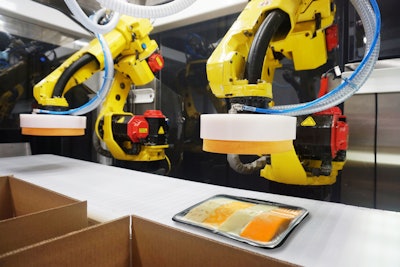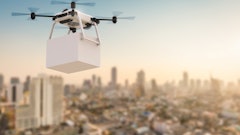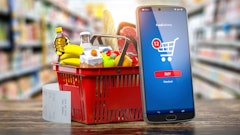
Newer, smarter robotics that work in cold rooms, including freezers, function much like a seasoned athlete. They do robotic warm-ups to ensure smooth operation to meet production demands. These movements keep the robotic “joints” limber by slowly increasing their movement, warming up the grease in each axis (their version of a joint).
Like humans, robots need to keep moving, so their axis stay loose and don’t stiffen. Where robots differ drastically from humans is that they can continually keep moving day and night.
The technological advancements in cold room robotics are aiding the food manufacturing and packaging supply chain by allowing more efficient production to occur 24/7 and without downtime. Here’s how:
Better environment for staff
Once a robot has been programmed and set up in cold environments, it’s ready to do repetitive movements – there’s no need to train it, it knows exactly what to do. Because it can stay continually in a cold environment, employees aren’t exposed to cold, harsh conditions for long periods of time. For workers, this cold can be very taxing on their bodies, requiring frequent breaks, as well as compromising their body’s defense system. By placing a robot in an environment that is unkind to people, it’s improving the safety and well-being of those employees
Doing more with less
With the labor shortage that’s affecting many industrial sectors, robotics are often a welcome addition. For starters, they excel in keeping production on schedule, and in the process elevate employees into positions where their skills can be put to better use. For most companies, labor is often the leading expense, and, additionally, it can be a challenge finding enough people to fill these positions; many of which are monotonous. Robotics automation reduces the number of employees needed to complete tasks, while relocating them to areas where they can be more beneficial to the company.
Staying warm
Since it is vital for many food manufacturing and packaging companies to maintain a functioning cold room, some have resorted to putting hats and coats on the existing robots in an effort to keep them warm. That is a major sanitation issue. By dressing it in warm clothes, you must wash or clean that robot and room frequently or it won’t pass sanitation requirements. This places workers in a cold environment and ultimately slows down production.
Next-generation cold room robots are coated with a special epoxy that replaces the warm clothes. By doing this, the cold room is maintained as a clean room again, removing the need and time for frequent cleaning and harsh climate exposure for employees. Additionally, smart robots have been programmed to know if it has been idle for a few minutes, it will sense that it’s getting cold and start moving to keep it warm and ready for production. It does not have to be told.
All these benefits provide a better ROI, increased production and the ability to maintain or exceed production with fewer employees.
Food manufacturing and packaging companies see that the investment in robotic automation is worth it because of the flexibility and ever-changing evolution for packages and products to meet consumer trends. Robotics are not just built for one product; companies can use their robots in a variety of applications. It’s never stuck in one process. The robot’s path can be changed, as well as the tooling to identify a new product or process. Since some companies change products every few months or more, these smart, cold room robots can flow into another production line with ease.
Labor isn’t cheap – there are sick days, vacation days and constant wage increases to maintain a competitive workforce. But, once a robot is paid off, it will continue to make the company money with no additional labor charges needed, and that is pure profit.
Smart cold room robotics provide so many benefits to food companies in the supply chain. From continual production and employee safety to job skills advancement, production flexibility and great ROI, they’ve changed the way cold rooms will function in the future. These robots let you prepare for a future when you might not yet know the direction it’s heading. A smart cold room robot changes and grows as you do.

















![Top Tech Startup Logo 2025 Vertical [color] (1)](https://img.foodlogistics.com/mindful/acbm/workspaces/default/uploads/2025/07/top-tech-startup-logo-2025-vertical-color-1.pZkBK95TLe.png?ar=16%3A9&auto=format%2Ccompress&bg=fff&fill-color=fff&fit=fill&h=135&q=70&w=240)

